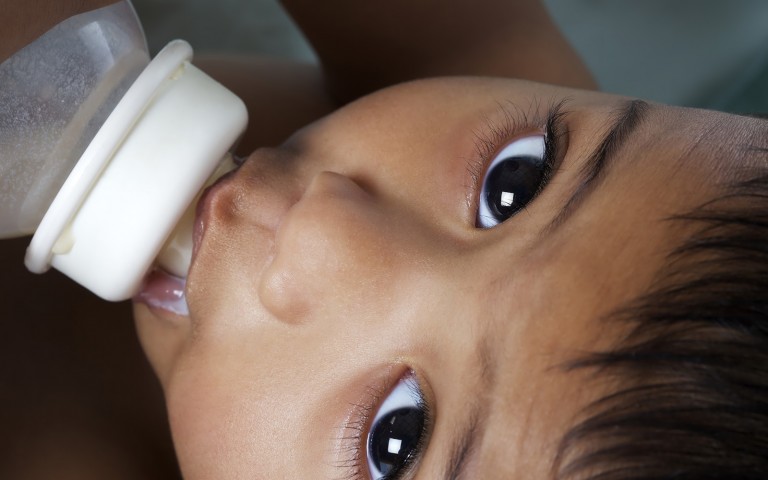
Photo: Lichtmeister | Dreamstime.com
While the adage ‘Breast is best’ continues to hold true when it comes to nutrition for infants, it is not always a viable option for working mothers or those who suffer from complications after giving birth. Breast milk banks, similar in idea to blood banks, are a modern day alternative that are increasingly being used in India.
Maternal and child health experts recommended that babies be breastfed till they are at least one year old. Recent research has found that babies who are not breastfed are more likely to need medical care during the first year of their lives. However, according to NDTV, the World Health Organization (WHO) and UNICEF estimate that just 20% of working women around the world are able to breast feed their children. Hence both organizations heartily endorse milk banks in India and other developing countries. By utilizing breast milk from a bank, a mother who is unable to breastfeed can still make sure her baby gets the nutrition her or she needs and can cut down on the risk of her child falling ill.
While some families may object to the idea of using another woman’s milk for their child, there are no medical objections. Ankur Kumar, a consultant in neonatal, pediatric and adolescent medicine at the Delhi-based BLK Super Specialty Hospital, said, “Mothers’ milk banks are completely safe for the children. Before taking the milk from the donor mothers, there are checks to ensure that they are healthy and well nourished, with no evidence of tuberculosis or other infectious diseases like HIV or hepatitis.”
Explaining the process, Amrita Desai, lactation consultant at the Pune-based KEM Hospital, told NDTV.com, “Breast milk is collected by trained staff, after taking full aseptic measures. The breast milk is either extracted manually or with breast pumps. The milk is collected in properly labelled sterile containers and transported to the banks under cold storage conditions.”
After this, it is refrigerated and a sample is tested. Desai adds, “If the bacterial culture is negative, then the milk is pasteurized. Milk from a bank is the only solution if babies do not get their own mother’s milk. It is imperative that every baby receives breast milk for growth, immunity, brain development and so on. India has a high infant mortality rate (IMR) due to myths regarding a baby’s nutrition.”
Even if the concept picks up in India, there is a need for more accessibility to breast milk banks. Currently, there are only 17 of these facilities available nationwide and most are situated in Rajasthan.
Did you, would you use a milk bank? Share your thoughts below. Please like FamiLife’s page on Facebook so that you get all our articles and others may find us.
